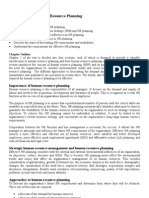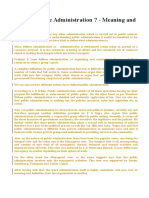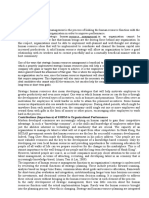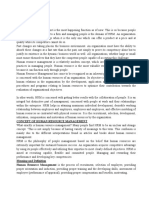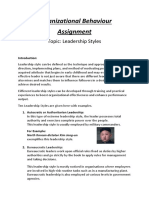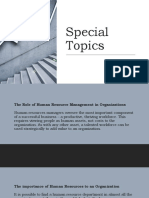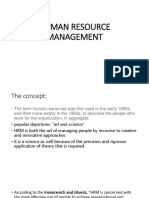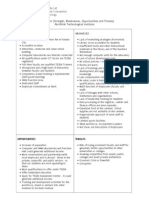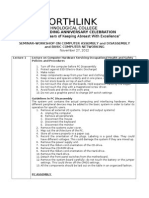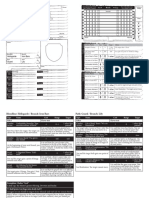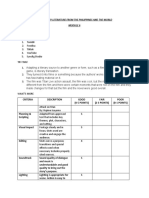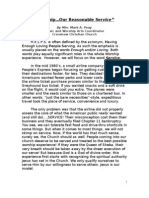100% found this document useful (5 votes)
5K views20 pagesHuman Resource Management Synthesis
This document provides an overview of 9 modules related to human resource management. Module 1 defines HRM and its key functions. Module 2 discusses organizational design, including defining vision/mission and structuring roles. Module 3 covers HR planning, recruitment, selection and staffing. The remaining modules address topics like compensation, employee relations, performance management, and organizational development. The document aims to provide a synthesis of essential HRM areas.
Uploaded by
Engr Grace DT PCopyright
© © All Rights Reserved
We take content rights seriously. If you suspect this is your content, claim it here.
Available Formats
Download as DOCX, PDF, TXT or read online on Scribd
100% found this document useful (5 votes)
5K views20 pagesHuman Resource Management Synthesis
This document provides an overview of 9 modules related to human resource management. Module 1 defines HRM and its key functions. Module 2 discusses organizational design, including defining vision/mission and structuring roles. Module 3 covers HR planning, recruitment, selection and staffing. The remaining modules address topics like compensation, employee relations, performance management, and organizational development. The document aims to provide a synthesis of essential HRM areas.
Uploaded by
Engr Grace DT PCopyright
© © All Rights Reserved
We take content rights seriously. If you suspect this is your content, claim it here.
Available Formats
Download as DOCX, PDF, TXT or read online on Scribd
/ 20





